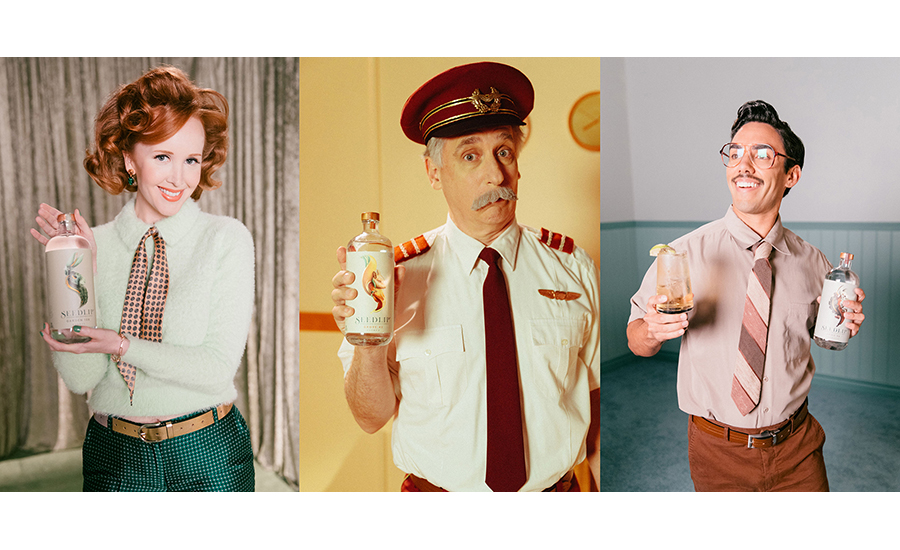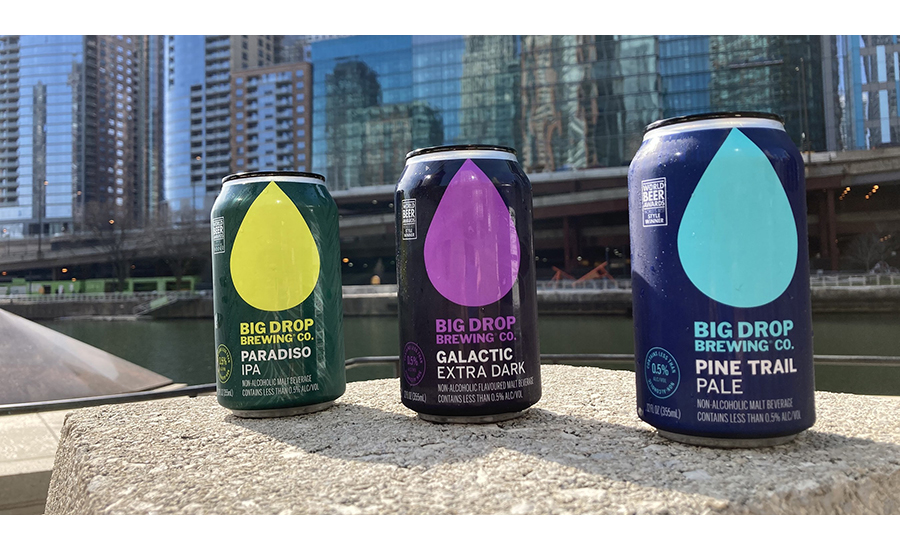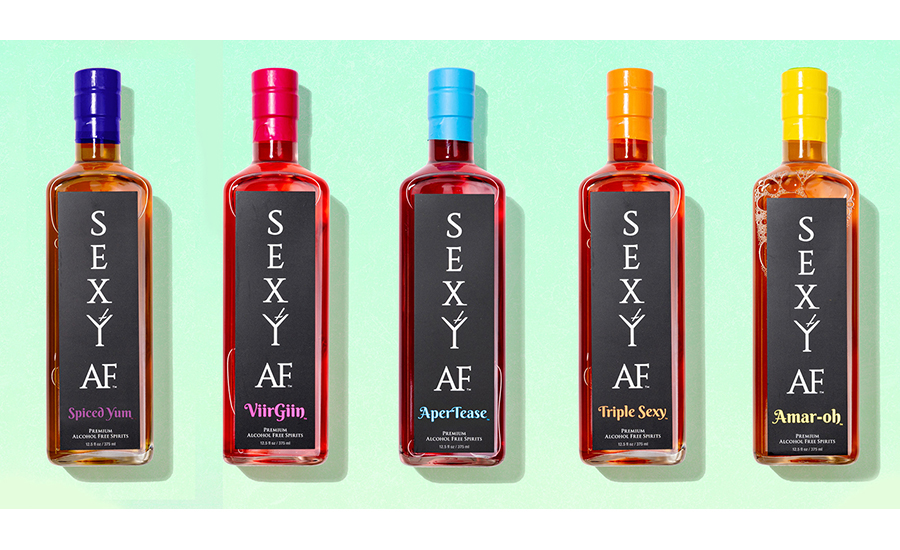Prepared Foods talks mocktail beverage trends with Maeve Webster, president of Menu Matters. Webster has been a foodservice industry consultant for more than 17 years, running hundreds of studies focused on trend analysis, opportunity assessment, new product concept development, and consumer behavior evaluation. In 2015, Webster founded Menu Matters, which helps foodservice professionals identify, evaluate, and leverage industry trends.
Prepared Foods: When did you starting noticing mocktails?
Maeve Webster: I'd say the current evolution of non-alcoholic adult beverages started in 2018, when the United Kingdom’s Seedlip Ltd. started getting noticed here in the states. Ironically, that also was the year that alcohol—as an ingredient—started to move heavily onto the menu. This, however, makes a bit of sense that because alcohol and spirits were so ubiquitous—a counter trend was bound to start.
It was around 2018 or 2019 when “Dry January” really started to gain a foothold as well. Although I'm not sure there's one operator or mixologist who can claim to have started the trend, it certainly was born out of the Millennial generation. Broadly speaking, these consumers have become significantly more focused on health and wellness than just weight loss or specific ailments (high blood pressure, cholesterol, etc.).
Mocktails and functional foods began to rise at about the same time, and many of the initial mocktail or non-alcoholic adult beverages incorporated functional ingredients that were hot at the time. As this generation became more focused on holistically healthful consumption, they also looked for non-alcoholic beverages that went beyond sodas or simple options. They were looking for drinks that incorporated the same skill and thoughtfulness that craft cocktails demonstrated and that trend already had been underway for a number of years.
Millennials are, if not anything else, very focused on the idea of craft, uniqueness, and curation. This helped spawn the craft cocktail movement and then informed the current non-alcoholic cocktail trend. Finally, at that point, the craft soda movement also had been underway for a few years. It helped to provide more adult, inspiring and unique mixers with which to base some of the initial non-alcoholic cocktails.

The UK’s Seedlip Ltd. launched its first US national advertising campaign in January 2020. The company introduced its first non-alcoholic spirit in 2015. Photo courtesy of: Seedlip Ltd.
PF: In what ways has this trend evolved in regard to the drinks themselves?
Webster: One of the most significant evolutions has been in non-alcoholic spirits, which had been dominated by Seedlip. Today, there’s a host of "spirits" from both here and abroad. These range from options that try to replace traditional spirits—such as gin, vodka and bourbon—to those that are unique options unto themselves such as Kin Euphorics.
Ultimately, I think this category will evolve to be its own unique offering that is not trying to replace traditional beverages but rather offer completely new, unique experiences that stand apart from any current category. Mixers and other flavors also have evolved to incorporate a host of craft mixers (new tonics, sodas, etc) as well as purees, syrups, pickled/ preserved ingredients, etc. Those bars/ operators that are seriously focused on craft cocktails are making them as enticing and craveable as the alcoholic cocktails on the menu.

Chicago’s Big Drop Brewing Co. celebrated the first “National NA Beer Day” on October 2 by saying it would support the James Beard Foundation's Open for Good campaign with a donation of 10% percent of Big Drop brew sales during the month of October. The Foundation's Open for Good programs help independent restaurants survive the Covid-19 crisis. Photo courtesy of: Big Drop Brewing Co.
PF: How have consumer behaviors or expectations shifted in this segment?
Webster: Millennials continue to drive this category and it's gained some broader acceptance among Gen X. Gen Z also is embracing it to some degree—although only a few cohorts in this generation are legally allowed to influence the bar culture. That said, I think what started as a craft non-alcoholic trend has broadened to start influencing the non-alcoholic beverages beyond the bar and in fast casual operators.
We're seeing more herbs and spices inform those beverages and a more adult sensibility drive the creation of more unique nonalcoholic beverages and, I think, that is largely born out of the initial efforts of the non-alcoholic cocktail trend.
PF: What are a few mocktails that caught your attention this year?
Webster: San Diego’s Beeside Balcony created “Black's Beach,” a grapefruit and lemon juice spiked with grapefruit bitters beneath a black salt rim. Raised by Wolves, another San Diego restaurant, created an adult Shirley Temple that features pebble ice, pink with grenadine and acid phosphate with club soda and brandied cherry.
Awake, a restaurant in Denver, created “Heat of the Night,” which features Three Spirits Night Cap, Wilfred's Orange Rosemary, lemon, ginger, turmeric and Hella bitters.
PF: Let’s talk about this trend from a broader perspective. Are we still in early days of mocktails or is it already a maturing market?
Webster: I think the idea of new adult cocktails is still new but certainly maturing quickly. I think where the significant innovation will continue—and where we still are in “early days”—relates to non-alcoholic spirits and spirit-like beverages. We've already seen an incredible expansion in this area but I think it's only just at the beginning.
Europe and Asia have been years ahead of the states in this so we'll see more of those products enter the market in addition to continued domestic innovation. I also think there are ongoing innovations in the areas of bitters and spirits, as well as the whole CBD and hemp categories.

Sexy AF Spirits, Calgary, AB, won a Double Gold medal at the World Spirit Awards. Officials say Sexy AF Spirits contain botanical extracts that are infused into the end product, making Sexy AF 30% BBV (Botanicals by Volume) as compared to other non-alcoholic spirits that may contain up to 1% alcohol and 99% water. This fall found Sexy AF in talks with US colleges to bring alcohol free to numerous campus bars. Photo courtesy of: Sexy AF Spirits
PF: Any observations in regard to beverage formulation technology?
Webster: I think the quality and expansion of the non-alcoholic spirits and mixers will have the greatest ongoing influence on this trend. I think there is so much room to grow here—involving one-to-one replacements for alcoholic spirits as well as entirely new beverages that are unique in their own right. And then you create completely new products.
Of course, younger mixologists will have a hand in continuing the expansion and evolution of this trend. However, they only are as good as the tools with which they work. What will be interesting to see is whether or not we start seeing non-alcoholic spirits blended with spirits to create lower alcohol cocktail options. I think that will start to happen as the non-alcoholic spirit category comes into its own to create completely unique beverage options that can then be blended with more traditional products to create something utterly new.
PF: Any last thoughts on where this market goes in 2022?
Webster: I’d say it’s a bit of anyone's guess based on what happens this winter. However, I do think we'll see more operators—primarily bars and restaurants—taking their non-alcoholic beverage selection seriously. Although there was a lot of pre-pandemic growth in this particular niche, there is a vast part of the industry that still has done little to offer thoughtfully curated selections to patrons who want a beverage with an adult sensibility—but no alcohol.
We’ll see competition continue to heat up and "winners" of the pandemic fall-out will emerge and begin to feel more confident in their futures. That’s when believe we'll see a renewed focus on innovation and the non-alcoholic cocktail category can only benefit.
Readers may visit www.menumatters.com or contact Maeve Webster at maeve@menumatters.com
